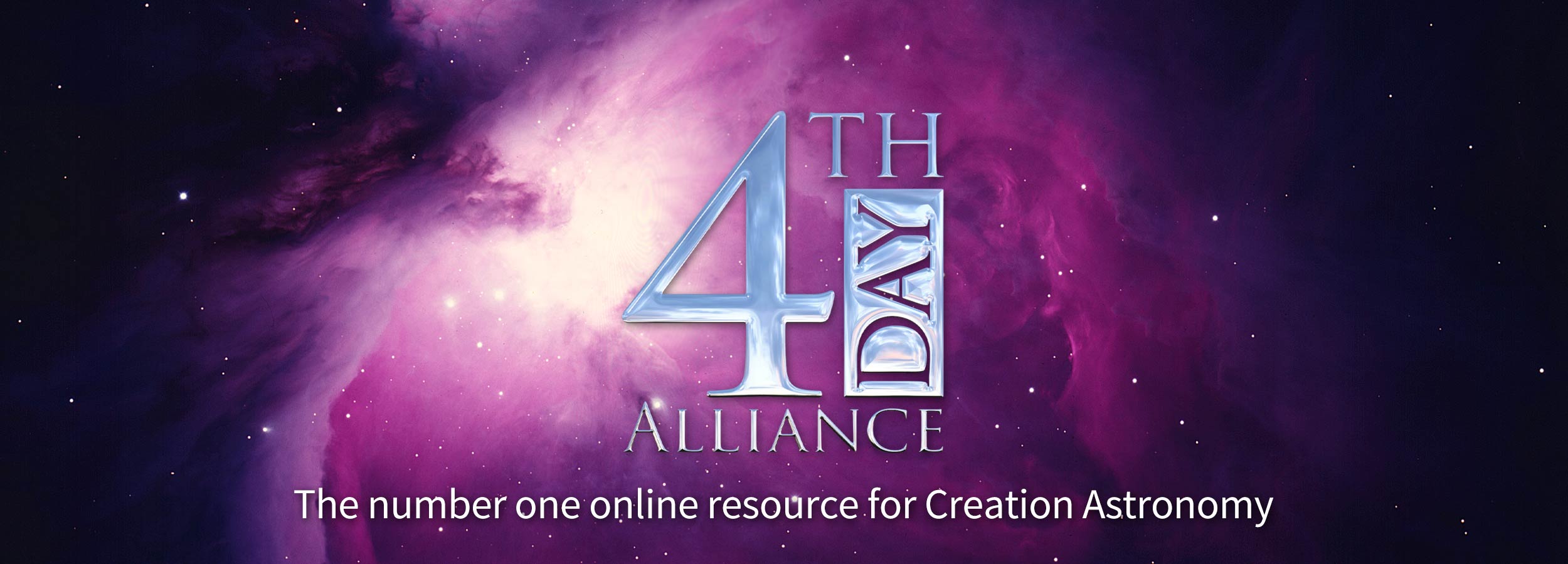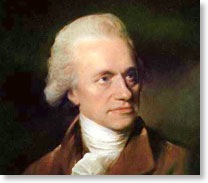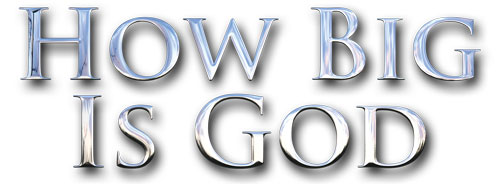
Creation Astronomers in History
 The father of stellar astronomy and the pride of the English in the late 18th to early 19th centuries was neither English nor a scientist originally, but a German-born immigrant musician, and a Jewish Christian. Friedrich Wilhelm Herschel (called William Herschel in his adopted country) was a pioneer of the heavens, taking Galileo’s early attempts at sky surveying to grand lengths. Patrick Moore considers Herschel the greatest observer who ever lived. Though just an amateur at first, he built the largest telescopes of his era, and in the process of spending countless hours on cold nights perched on a ladder at the eyepiece of his instruments, he discovered binary stars, nebulae, comets, and the planet Uranus – the first man to discover a planet since antiquity. He proved that the laws that govern our earth and moon are the same throughout the heavens. He brought into focus the understanding that the earth and sun are but specks among thousands of similar suns. He launched modern astronomy’s project to understand the nature of the nebulae, the distribution of stars in the galaxy and our place in it. He discovered invisible infrared light. In addition to his scientific observations, William Herschel became a leading natural philosopher and a friend of kings and intellectuals, yet he was described as a man of devout, yet simple Christian faith.
The father of stellar astronomy and the pride of the English in the late 18th to early 19th centuries was neither English nor a scientist originally, but a German-born immigrant musician, and a Jewish Christian. Friedrich Wilhelm Herschel (called William Herschel in his adopted country) was a pioneer of the heavens, taking Galileo’s early attempts at sky surveying to grand lengths. Patrick Moore considers Herschel the greatest observer who ever lived. Though just an amateur at first, he built the largest telescopes of his era, and in the process of spending countless hours on cold nights perched on a ladder at the eyepiece of his instruments, he discovered binary stars, nebulae, comets, and the planet Uranus – the first man to discover a planet since antiquity. He proved that the laws that govern our earth and moon are the same throughout the heavens. He brought into focus the understanding that the earth and sun are but specks among thousands of similar suns. He launched modern astronomy’s project to understand the nature of the nebulae, the distribution of stars in the galaxy and our place in it. He discovered invisible infrared light. In addition to his scientific observations, William Herschel became a leading natural philosopher and a friend of kings and intellectuals, yet he was described as a man of devout, yet simple Christian faith.
To the Herschel legend we must quickly add his sister Caroline and his son John William, who both rose to his level of greatness. William’s father was a bandmaster in the Hanoverian guard. Each of his children became talented musicians; William gained proficiency on the oboe. Troubles with the Seven Years War in Germany made him leave for England, where he landed with scarcely one coin in his pocket. His musical skills kept him gainfully employed as a church organist and oboist. Seven years after arriving, he began to take up seriously a hobby he had always enjoyed, astronomy. The telescopes of his day were not powerful enough for him. He learned how to grind mirrors, and spent all his spare time (when not playing music) perfecting the art. Patrick Moore says that one of his first attempts at making a 5" objective succeeded after two hundred failures.
By 1774, his brother and sister also arrived in England. Caroline stayed with William and became his assistant. William’s observing career was launched in earnest with a look at the Orion Nebula, and he continued for 37 years, making bigger and better telescopes along the way until his home (Observatory House in Slough) boasted a 48" mirror weighing over a ton inside a 40' tube slung within a giant wooden scaffold. Caroline, short and unmarried, was her brother’s biggest helper. Even after William married at age 50, she remained near at hand, keeping his records and doing some significant observing herself. She discovered six comets (a big interest in those days), and was eventually honored by royalty, famous in her own right to the age of 98. Caroline, however, thought little of her own fame. Like a humble moon, she was content to bask in the “reflected glory” of her famous brother.
Uranus was discovered accidentally while William scanned the skies. The fame of being the first human to discover a new planet around the sun resulted in King George III granting him a permanent salary as royal astronomer, enough to let him abandon his musical career and do astronomical work full time. He wanted to name the new planet in the king’s honor, but other astronomers voted to stick to the naming convention of mythological gods, so the name Uranus was chosen. Uranus is a strange planet, hard to explain by naturalistic theories, because of its energy, composition, and inclination; tipped at 98 degrees, it circles the sun with its retinue of moons like a bull’s eye. Stranger still, discoveries by the Voyager spacecraft in 1986 showed its magnetic field to be highly tilted and off-center. No one has been able to explain why. One of its moons, Miranda, has some of the strangest terrain ever seen, including a cliff so high that in the weak gravity of that world, someone stumbling over the edge would be in free-fall for eight minutes. Speaking of moons, Herschel also discovered two more moons of Saturn (Mimas and Enceladus). How awe-struck and fascinated would be his expression today to see what spacecraft have revealed close-up on these objects that, to him, were mere faint points of light twinkling in the eyepiece of his telescopes, as he gazed in the cold, still night air.
One of Herschel’s main goals was to sample the sky systematically and map the distribution of stars, to gain a picture of where the sun stood in relation to the Milky Way. Due to assumptions later shown to be flawed, his map put the earth at the center of a somewhat flattened, oblong shape. It was an important start, nonetheless. Herschel was a diligent observer, ever willing to sacrifice his hypotheses on the altar of new evidence. At first he thought binary stars were chance alignments, but later observations proved they were in orbit around each other. He thought the nebulae were composed of stars made faint by distance, but later realized some were composed of dust or gas. Herschel gave us the unfortunate term “planetary nebulae” because these objects at first appeared to him as disks like planets; they have nothing to do with planets and exist far beyond our solar system. The Hubble Space Telescope has revealed many of these as brilliant, colorful stellar explosions with intricate hourglass and spiral structures. Some show evidence of repeated incidents of mass loss. In all, Herschel catalogued over 90,000 stars, far more than any of his predecessors, and he increased the number of known nebulae from 103 to 2500. Most mysterious were the non-planetary nebulae. Herschel considered Immanuel Kant’s idea that these might be distant and distinct stellar associations — galaxies like our own Milky Way, but the proof would have to wait for 202 years after Herschel’s death. Another contribution was calibrating of the old stellar magnitude scale of Hipparchus; he realized that a difference of five magnitudes corresponded to a change in brightness of 100. Herschel submitted 90 volumes to the Royal Society during his productive life. Patrick Moore says, “More than any other man, he put stellar astronomy on a really firm footing. ... He was knighted in 1816, he received every honor that the scientific world could bestow, and he became the first President of the newly-formed Astronomical Society of London (now the Royal Astronomical Society). He presented his last scientific paper when he was eighty years old, and he was active almost to the date of his death on August 25, 1822.” He is buried under the tower of the old Anglican church in Slough, England.
Though sources I’ve checked agree William Herschel was sincerely religious, none are detailed enough to indicate if he was really a “born-again” Christian. His family attended church regularly, but musician that he was, William could have been more performer than believer. Was he just a Sunday Christian, and secular astronomer the rest of the week? N. S. Dodge wrote in 1871 of the family’s sincere Christian faith, but Dan Graves (Scientists of Faith, p. 115) called him “a nominal Christian, at best.” Herschel had some strange ideas: he believed the other planets, the moon, and even the sun were inhabited (but so did many others in his day). Some of his writings seem to assume long ages and the insignificance of man in a universe populated not only by myriads of stars but perhaps other civilizations. He speaks of the Author and Creator of the heavens, but not of the Scriptures or Jesus Christ. Herschel dined with Hume and LaPlace, the skeptics, but as a dignitary in frequent touch with the intellectuals of the day and polite society, this cannot be taken to assume agreement with them. In some of his diary entries, it appears they conversed about music or the fine cuisine rather than philosophy or theology. In The Scientific Papers of Sir William Herschel published by the Royal Society in 1912, he relates an incident where the First Consul and La Place were having an argument over naturalistic philosophy. Herschel writes in his diary,
Several Christian biographical essays have echoed Henry Morris’ attribution to Herschel of the line, “An undevout astronomer must be mad” (Men of Science, Men of God, p. 30). Unfortunately, I have not been able to corroborate this quotation. The slightly different line “An undevout astronomer is mad” is part of a poem entitled “Night thoughts“ by Edward Young, whose life was earlier but overlapped with Herschel’s. Perhaps the poem was inspired by the life of Herschel, or a statement by him. It would not be unrealistic to assume that the statement reflected Herschel’s own feelings about his work. It seems clear that Herschel was devout, prayerful, humble, gracious, kind, and moral – good, but not enough to indicate a true believer in the gospel of Jesus Christ. The sources I have checked do not provide enough evidence to call William Herschel more than a nominal Christian. Scientists in this period of the so-called “Enlightenment” were enamoured with natural laws. They were taking Newton’s emphasis on laws to new extremes, and knowingly or not, tended to distance God from immanent action in the affairs of the world. Where Herschel fits in this trend is not clear. But even if he falls short of an example of a thoroughly Biblical Christian, he clearly does exemplify one who believed in a divine Creator and Author of the laws of nature, to whom we owe our worship and admiration. As such, he was at least continuing in the tradition of empirical science motivated by the Christian world view.
Observatory House was pulled down in 1960, but the tube of his 40-foot telescope was kept at the Greenwich Observatory as a monument to the years of painstaking observation of the skies by a man starstruck by the wondrous majesty and order of Creation. In the summer of 1986, the Voyager 2 spacecraft made a historic flyby of the planet Uranus. The St. Laurence Anglican Church in Slough, England, where Herschel is buried, was recently restored after years of damage and neglect, and in February 2001, was adorned with a new stained-glass Herschel Window commemorating his astronomical discoveries. Another nearby window quotes Psalm 8, “When I consider the heavens, the work of Thy fingers, the moon and the stars, which Thou hast ordained, what is man, that Thou art mindful of him?”
William Herschel (1738 - 1822)
This article has been copied from the Creation Safaris website and was authored by David Coppedge. It is posted here with permission. The original article can be found here.
To the Herschel legend we must quickly add his sister Caroline and his son John William, who both rose to his level of greatness. William’s father was a bandmaster in the Hanoverian guard. Each of his children became talented musicians; William gained proficiency on the oboe. Troubles with the Seven Years War in Germany made him leave for England, where he landed with scarcely one coin in his pocket. His musical skills kept him gainfully employed as a church organist and oboist. Seven years after arriving, he began to take up seriously a hobby he had always enjoyed, astronomy. The telescopes of his day were not powerful enough for him. He learned how to grind mirrors, and spent all his spare time (when not playing music) perfecting the art. Patrick Moore says that one of his first attempts at making a 5" objective succeeded after two hundred failures.
By 1774, his brother and sister also arrived in England. Caroline stayed with William and became his assistant. William’s observing career was launched in earnest with a look at the Orion Nebula, and he continued for 37 years, making bigger and better telescopes along the way until his home (Observatory House in Slough) boasted a 48" mirror weighing over a ton inside a 40' tube slung within a giant wooden scaffold. Caroline, short and unmarried, was her brother’s biggest helper. Even after William married at age 50, she remained near at hand, keeping his records and doing some significant observing herself. She discovered six comets (a big interest in those days), and was eventually honored by royalty, famous in her own right to the age of 98. Caroline, however, thought little of her own fame. Like a humble moon, she was content to bask in the “reflected glory” of her famous brother.
Uranus was discovered accidentally while William scanned the skies. The fame of being the first human to discover a new planet around the sun resulted in King George III granting him a permanent salary as royal astronomer, enough to let him abandon his musical career and do astronomical work full time. He wanted to name the new planet in the king’s honor, but other astronomers voted to stick to the naming convention of mythological gods, so the name Uranus was chosen. Uranus is a strange planet, hard to explain by naturalistic theories, because of its energy, composition, and inclination; tipped at 98 degrees, it circles the sun with its retinue of moons like a bull’s eye. Stranger still, discoveries by the Voyager spacecraft in 1986 showed its magnetic field to be highly tilted and off-center. No one has been able to explain why. One of its moons, Miranda, has some of the strangest terrain ever seen, including a cliff so high that in the weak gravity of that world, someone stumbling over the edge would be in free-fall for eight minutes. Speaking of moons, Herschel also discovered two more moons of Saturn (Mimas and Enceladus). How awe-struck and fascinated would be his expression today to see what spacecraft have revealed close-up on these objects that, to him, were mere faint points of light twinkling in the eyepiece of his telescopes, as he gazed in the cold, still night air.
One of Herschel’s main goals was to sample the sky systematically and map the distribution of stars, to gain a picture of where the sun stood in relation to the Milky Way. Due to assumptions later shown to be flawed, his map put the earth at the center of a somewhat flattened, oblong shape. It was an important start, nonetheless. Herschel was a diligent observer, ever willing to sacrifice his hypotheses on the altar of new evidence. At first he thought binary stars were chance alignments, but later observations proved they were in orbit around each other. He thought the nebulae were composed of stars made faint by distance, but later realized some were composed of dust or gas. Herschel gave us the unfortunate term “planetary nebulae” because these objects at first appeared to him as disks like planets; they have nothing to do with planets and exist far beyond our solar system. The Hubble Space Telescope has revealed many of these as brilliant, colorful stellar explosions with intricate hourglass and spiral structures. Some show evidence of repeated incidents of mass loss. In all, Herschel catalogued over 90,000 stars, far more than any of his predecessors, and he increased the number of known nebulae from 103 to 2500. Most mysterious were the non-planetary nebulae. Herschel considered Immanuel Kant’s idea that these might be distant and distinct stellar associations — galaxies like our own Milky Way, but the proof would have to wait for 202 years after Herschel’s death. Another contribution was calibrating of the old stellar magnitude scale of Hipparchus; he realized that a difference of five magnitudes corresponded to a change in brightness of 100. Herschel submitted 90 volumes to the Royal Society during his productive life. Patrick Moore says, “More than any other man, he put stellar astronomy on a really firm footing. ... He was knighted in 1816, he received every honor that the scientific world could bestow, and he became the first President of the newly-formed Astronomical Society of London (now the Royal Astronomical Society). He presented his last scientific paper when he was eighty years old, and he was active almost to the date of his death on August 25, 1822.” He is buried under the tower of the old Anglican church in Slough, England.
Though sources I’ve checked agree William Herschel was sincerely religious, none are detailed enough to indicate if he was really a “born-again” Christian. His family attended church regularly, but musician that he was, William could have been more performer than believer. Was he just a Sunday Christian, and secular astronomer the rest of the week? N. S. Dodge wrote in 1871 of the family’s sincere Christian faith, but Dan Graves (Scientists of Faith, p. 115) called him “a nominal Christian, at best.” Herschel had some strange ideas: he believed the other planets, the moon, and even the sun were inhabited (but so did many others in his day). Some of his writings seem to assume long ages and the insignificance of man in a universe populated not only by myriads of stars but perhaps other civilizations. He speaks of the Author and Creator of the heavens, but not of the Scriptures or Jesus Christ. Herschel dined with Hume and LaPlace, the skeptics, but as a dignitary in frequent touch with the intellectuals of the day and polite society, this cannot be taken to assume agreement with them. In some of his diary entries, it appears they conversed about music or the fine cuisine rather than philosophy or theology. In The Scientific Papers of Sir William Herschel published by the Royal Society in 1912, he relates an incident where the First Consul and La Place were having an argument over naturalistic philosophy. Herschel writes in his diary,
- The difference was occasioned by an exclamation of the First Consul’s, who asked in a tone of exclamation or admiration (when we were speaking of the extent of the sidereal heavens) ‘and who is the author of all this.’ M. de La Place wished to shew that a chain of natural causes would account for the construction and preservation of the wonderful system; this the First Consul rather opposed. Much may be said on the subject; by joining the arguments of both we shall be led to ‘Nature and Nature’s God.’
- These letters, which extend to some 400 pages, are still extant but have not been at our disposal. We are informed that Herschel in them interweaves his philosophy and even his musical studies with references of an earnest kind to the Creator as a beneficent Deity, expressing his gratitude and addressing him in a prayerful spirit.
Several Christian biographical essays have echoed Henry Morris’ attribution to Herschel of the line, “An undevout astronomer must be mad” (Men of Science, Men of God, p. 30). Unfortunately, I have not been able to corroborate this quotation. The slightly different line “An undevout astronomer is mad” is part of a poem entitled “Night thoughts“ by Edward Young, whose life was earlier but overlapped with Herschel’s. Perhaps the poem was inspired by the life of Herschel, or a statement by him. It would not be unrealistic to assume that the statement reflected Herschel’s own feelings about his work. It seems clear that Herschel was devout, prayerful, humble, gracious, kind, and moral – good, but not enough to indicate a true believer in the gospel of Jesus Christ. The sources I have checked do not provide enough evidence to call William Herschel more than a nominal Christian. Scientists in this period of the so-called “Enlightenment” were enamoured with natural laws. They were taking Newton’s emphasis on laws to new extremes, and knowingly or not, tended to distance God from immanent action in the affairs of the world. Where Herschel fits in this trend is not clear. But even if he falls short of an example of a thoroughly Biblical Christian, he clearly does exemplify one who believed in a divine Creator and Author of the laws of nature, to whom we owe our worship and admiration. As such, he was at least continuing in the tradition of empirical science motivated by the Christian world view.
Observatory House was pulled down in 1960, but the tube of his 40-foot telescope was kept at the Greenwich Observatory as a monument to the years of painstaking observation of the skies by a man starstruck by the wondrous majesty and order of Creation. In the summer of 1986, the Voyager 2 spacecraft made a historic flyby of the planet Uranus. The St. Laurence Anglican Church in Slough, England, where Herschel is buried, was recently restored after years of damage and neglect, and in February 2001, was adorned with a new stained-glass Herschel Window commemorating his astronomical discoveries. Another nearby window quotes Psalm 8, “When I consider the heavens, the work of Thy fingers, the moon and the stars, which Thou hast ordained, what is man, that Thou art mindful of him?”
ADDRESS:
4th Day Alliance
1317 Edgewater Dr #5077
Orlando, FL 32804
(208) 477-1825
4th Day Alliance
1317 Edgewater Dr #5077
Orlando, FL 32804
(208) 477-1825

